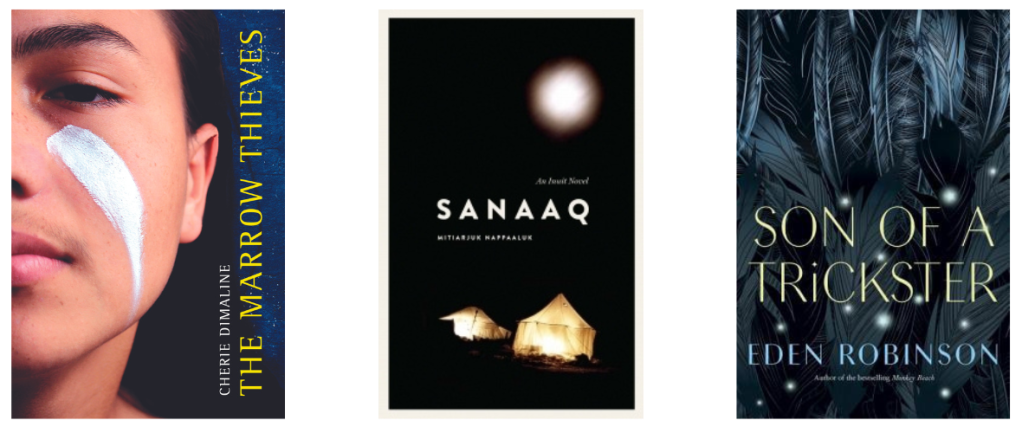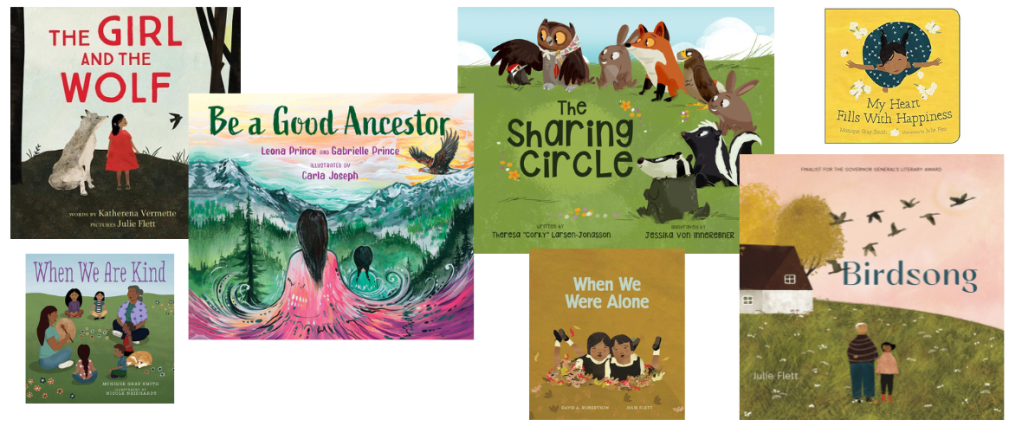June is Indigenous History Month! On the Government of Canada website, it says, “June is National Indigenous History Month in Canada, a time to recognize the rich history, heritage, resilience and diversity of First Nations, Inuit and Métis.”
But why is it important to learn about Indigenous history?
Indigenous Peoples have played an essential role in shaping Canada. They have been a part of this land for generations, and it is crucial that we, as Canadians, recognize this.
One great way to celebrate and honour the role Indigenous People have played in this country is by reading books written by Indigenous authors. Canada has a wealth of Indigenous authors who speak of their history, their culture, their traditions, and so much more in their writings.
Today we’re going to look at some of the Indigenous books that I recommend you read, as well as the ones that I would like to read–and I’d love to hear your own recommendations in the comments below.
My Indigenous Reads Recommendations
I’ll be honest, I have not read a lot of Indigenous-authored books, but I do have a lot on my reading list. I recall a time when seeing Indigenous-authored books wasn’t a common thing in the bookstore or library, so I really appreciate how easy it is to see and find them now.
Libraries and bookstores put together displays of Indigenous-authored books, whether it’s Indigenous History Month or not, which is very important, and their contributions should be recognized all year round.
I’ve read some books on my own and others with my children, and I’ll highlight them below.

The Marrow Thieves (The Marrow Thieves, #1) by Cherie Dimaline
This futuristic dystopian novel is about a society where people have lost the ability to dream, but getting that ability back lies in the marrow of the Indigenous People who can still dream. In order to get this marrow, the donors have to die.
This young adult novel, the first of a series, is about a group of young Indigenous teens who are struggling to survive the hunt of these bone marrow harvesters.
Sanaaq: An Inuit Novel by Mitiarjuk Nappaaluk (translated by Peter Frost)
If you read any of my recommendations, this should be the book you read. Sanaaq is a book about an Inuit family and the changes they experience with the coming of the white people in the mid-nineteenth century. It is told in 48 “episodes” and is about the daily life of this family living in an Inuit community in Quebec.
This book was written by Nappaaluk after being “asked by a priest who was working in Kangiqsujuaq in northern Quebec to write down some Inuttitut phrases to assist him in the study of the language.” Nappaaluk started this book at the age of twenty-two, and over the next twenty years, she wrote the first Inuit novel.
Son of A Trickster (Trickser, #1) by Eden Robinson
This coming-of-age novel–another first in a series–is much different from the first two recommendations and is about Jared, a burnout sixteen-year-old who smokes and drinks too much. The story is a blend of comedy, drama, and magical realism and was a finalist in the Canada Reads book competition in 2020.
This story weaves Indigenous folklore and beliefs with memorable characters, witty dialogue, and a lot of strange things that happen.
Indigenous Books for Younger Readers
As a mom to two young children, it’s no doubt that I’ve read a lot of picture books over the years. I love it when my kids come home with unique picture books, and this month my daughter has brought home a few titles related to Indigenous history and culture.

The Girl and The Wolf is by Katherena Vermette, who is of Metis descent from Winnipeg, Manitoba. This story is a new spin on the “big bad wolf” and is about a wolf who is not bad but who helps a girl reconnect with nature and the gifts she had all along.
When We Are Kind and My Heart Fills With Happiness are both by Monique Gray Smith, an author of Cree, Lakota, and Scottish descent who is based in Victoria, British Columbia. When We Are Kind features Indigenous children and is about kindness. My Heart Fills With Happiness encourages young children to reflect on the things that bring them happiness and joy.
Be a Good Ancestor is by Leona Prince, who is from the Lake Babine Nation and Nak’azdli Whu’ten and belongs to the Likh Tsa Mis Yu Clan. The story talks of the Indigenous teachings of being a good ancestor to the world around you.
The Sharing Circle is by Theresa “Corky” Larsen-Jonasson, a Cree/Danish Métis Elder with roots in Red Deer and Maskwacis First Nations. This story is about the traditional Indigenous sharing circle and how it is important to listen to and respect one another.
When We Were Alone is by David Alexander Robertson, a member of Norway House Cree Nation who lives in Winnipeg. This beautifully illustrated book is a story of a grandmother and her granddaughter, how residential schools tried to suppress the grandmother’s culture, and how she and others found ways to keep that culture alive.
Birdsong is by Julie Flett, a Cree-Metis author, illustrator, and artist. This story is full of beautiful art, a change of seasons, and a love of nature. It also features an intergenerational relationship between a young girl and an older woman who lives next door and how they become friends.
What is on my Indigenous Reads reading list for Indigenous History Month?
There are a lot of books I’ve had my eye on that are by Indigenous authors, and hopefully, I can get to some of them during Indigenous History Month. Some are by Canadian authors, and others are not, but all are very important reads.

The Ghost Collector by Allison Mills is a story about Shelly and her grandmother, who catch ghosts and help them move on. According to the synopsis on Goodreads, the story is “[r]ooted in a Cree worldview and inspired by stories about the author’s great-grandmother’s life [and] delves into questions of grief and loss.”
Another story involving ghosts, Elatsoe, is about a girl named Elatsoe who can raise the ghosts of dead animals, something that has been passed down through generations of her Apache Lipan family. According to the Goodreads synopsis, “[h]er beloved cousin has just been murdered in a town that wants no prying eyes. But she is going to do more than pry. The picture-perfect facade of Willowbee masks gruesome secrets, and she will rely on her wits, skills, and friends to tear off the mask and protect her family.”
Fatty Legs, by Christy Jordan-Fenton and Margaret Pokiak-Fenton, is a middle school novel based on the true story of eight-year-old Margaret, who leaves her Arctic community to attend a residential school. According to the Goodreads synopsis, “this inspiring first-person account of a plucky girl’s determination to confront her tormentor will linger with young readers.”
Lastly, Daughters of the Deer, by Danielle Daniel, is a historical fiction story about Marie, an Algonquin woman of the Weskarini Deer Clan, who lost her husband and is now wanted by a French soldier as his wife. It is also about Jeanne, the child of this marriage, who is torn between two worlds. According to the Goodreads synopsis, Daniel “imagines her way into the heart and mind of a woman at the origin of the long history of violence against Indigenous women and the deliberate, equally violent, disruption of First Nations culture–opening a door long jammed shut, so all of us can enter.”
So those are the books I’ve read, shared with my children, and the ones I want to read during this month, Indigenous History Month. I’d love to know what you’re planning to read this month or what you’ve read in the past that you recommend.
And if you’re looking for more resources on Indigenous History Month, you can check out any of the ones listed below:
- How to celebrate and honour National Indigenous History Month in 2023
- 30 must-read books for National Indigenous History Month
- Celebrating National Indigenous History Month
- National Indigenous History Month Resources for Young People
You might also be interested in the following:
Let me know in the comments what Indigenous books you’ve loved or plan to read this month!

2 thoughts on “June is Indigenous History Month: Celebrate With These Important Indigenous Reads”